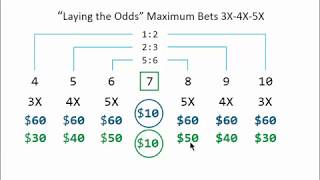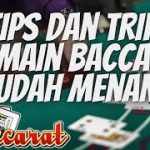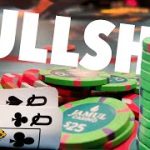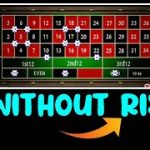Learn Craps Video Source And Information:
The “laying the odds” craps side bet has a zero house edge. I demonstrate this bet at the Wizard of Odds craps simulator and show how the payoff ratios are calculated. Parts 1 and 2 are available here:
The Don’t Pass bet is the opposite of the Pass bet. It wins when Pass loses, and loses when Pass wins, with one exception. Throwing 12 in the come-out roll is a tie for the Don’t Pass bet, not a win. This small difference brings down the total return of the Don’t Pass bet from +1.4% to -1.4%, same as for the Pass bet.
Now let’s take a look at the payoff ratios. If the point is 10, a decision is rendered by throwing a 7, which wins, or 10, which loses. There are 6 ways to throw a 7 and win, and 3 ways to throw a 10 and lose. Your chance of winning is 6/9 and your chance of losing is 3/9. The odds bet is fair, so the payoff on a win is 3:6, or one-half the size of your odds bet. Because you are more likely to win than lose, the payoff is less than your odds bet.
For the 5:6 payoff points, be sure to bet a whole multiple of $6 so you can win a whole number of dollars, as there are no one-sixth dollar chips; and bet a multiple of $3 when the payoff is 2 to 3. To keep it simple, you can always bet a multiple of $6 when you lay the odds on a Don’t Pass bet.
The casino limits the size of your odds bet to a multiple of your Don’t Pass bet, usually 3X-4X-5X. These multiples apply to the payoffs when you win, so you can always bet up to 6 times your Don’t Pass bet.
The house edge is zero on odds bets and 1.4% on the Don’t Pass bet, or 14 cents on a $10 Don’t Pass bet.
Both winning and losing streaks will occur, and a bad losing streak can wipe out your entire bankroll, as demonstrated in the next video, “Craps Simulation Excel Spreadsheet”:
The field bet in craps has a house edge of 2.78%, which is worse than Pass or Don’t Pass, but better than most craps bets. You can view a simulation of field bet results here:
Source: YouTube








The next video, "Craps Simulation Excel Spreadsheet," is available here:
https://youtu.be/WLiLTOkP_hs
Love your videos! Your one of the very very few that show graphs, charts, and spreadsheets. I would like to beg a major favor. I’m not good at math, so I don’t know how to calculate the odds and percentages of a craps system I created. I would like to ask you if you could make a video for me here to show it. I have found a way to nullify the Pass line and still make true free odds bets with No house edge, risking Only the true free odds bet(s). The first part of the one, two setup is as follows. At a $5 table, the player bets $5 on the Pass line, & ALSO @ THE SAME TIME, $5 on the Don’t Pass line. The object is not on the winning side, but on cutting the losing side down to as small as possible. The only way the player can Lose is if the shooter rolls a 12 on the come out roll. Everything else is a push/tie, or the shooter establishes a point, which is what the player wants. I know that there is only ONE way to roll a 12 out of 36 combinations of the dice, but I don’t know what that percentage is, or what this cuts the house edge down to, which is where I need your help. …. phases Two.: Once the shooter establishes a point, then the 12 can not hurt us any more, & also the house edge that comes from the Pass line is now Nullified by the Don’t Pass line, & the only bet at risk is the true free odds bet the player is going to make now next to the Pass line. That is the basic theory, however I always want more combinations working for me, than against me, because the 7 has 6 combinations out of 36. How the player gets more numbers is doing the above, but waits on putting the odds bet down. Once the point is established the player then puts a $5 bet in the Come, & also @ the same time, put $5 in the Don’t Come too. The 12 is against the player again just like it was on the other bet until we get another number established. Now once the shooter rolls and establishes a second number the Come, & Don’t Come travel to that new second number. The player wants any two even numbers (4,6,8, or 10) including or excluding the point. Example when the player has a 6 & 8 established then take odds on both 6 & 8 at the same time, because then the player has 10 ways (combinations) to win, and 6 ways (combinations of the 7) of losing, instead of with only one number with less combinations of winning, and still 6 ways of losing. If the 4, or 10 is a number that gets established, you have two options. You can stay on the right side and take odds that way, or you can lay $14 odds against the 4 or 10 & Also put $2 on the Hard 4 or 10. The second way will create a hedge if you have one of your other numbers as a 6 or 8 with single odds on the 6 or 8. If the 7 is rolled, then you lose your odds on the 6 or 8, but win on the no 4 or 10 and it becomes a push/tie. If you choose to take the second option the only way you can lose is on a Soft 4 or 10, which is 2 combinations of 36. You have cut your ways of losing as low as possible and have free odds working for you with no house edge. Please feel free to critique this, and if you have any questions I’ll be more than happy to answer you. Thanks in advance for helping me.
the 14¢ house edge takes into consideration the taking down of any don't bet, correct? if not, then the 14¢ could be shaved to 11¢ or even a dime. could you comment on this?
Cromwell offers 100X odds up to $5,000 which eliminates any need for "hedge" betting. only problem is buying in at $100,000…my suggestion is starting mildly, say, $10,000 clams. Cromwell is affiliated with Caesar's Palace trading under symbol CRZ. cheers!